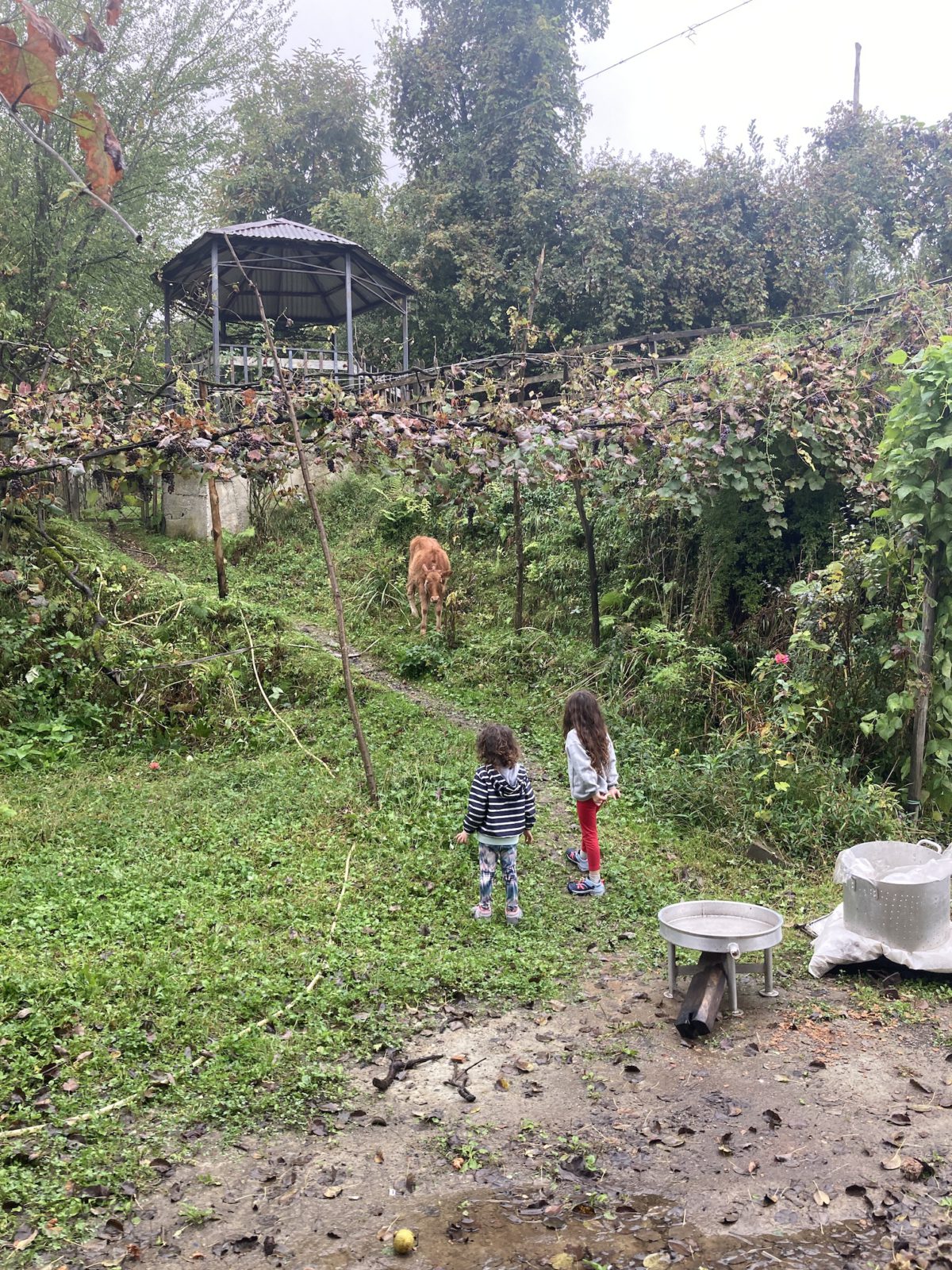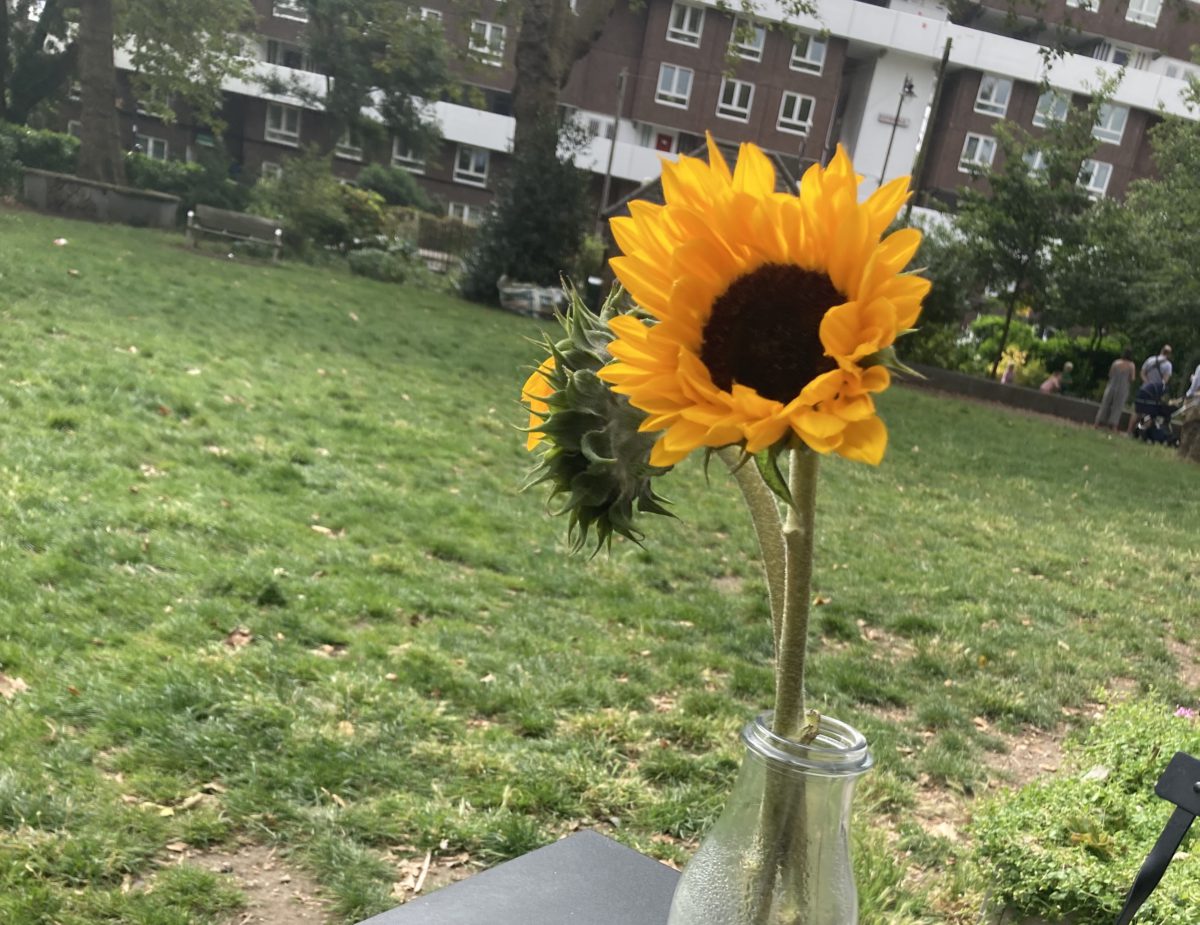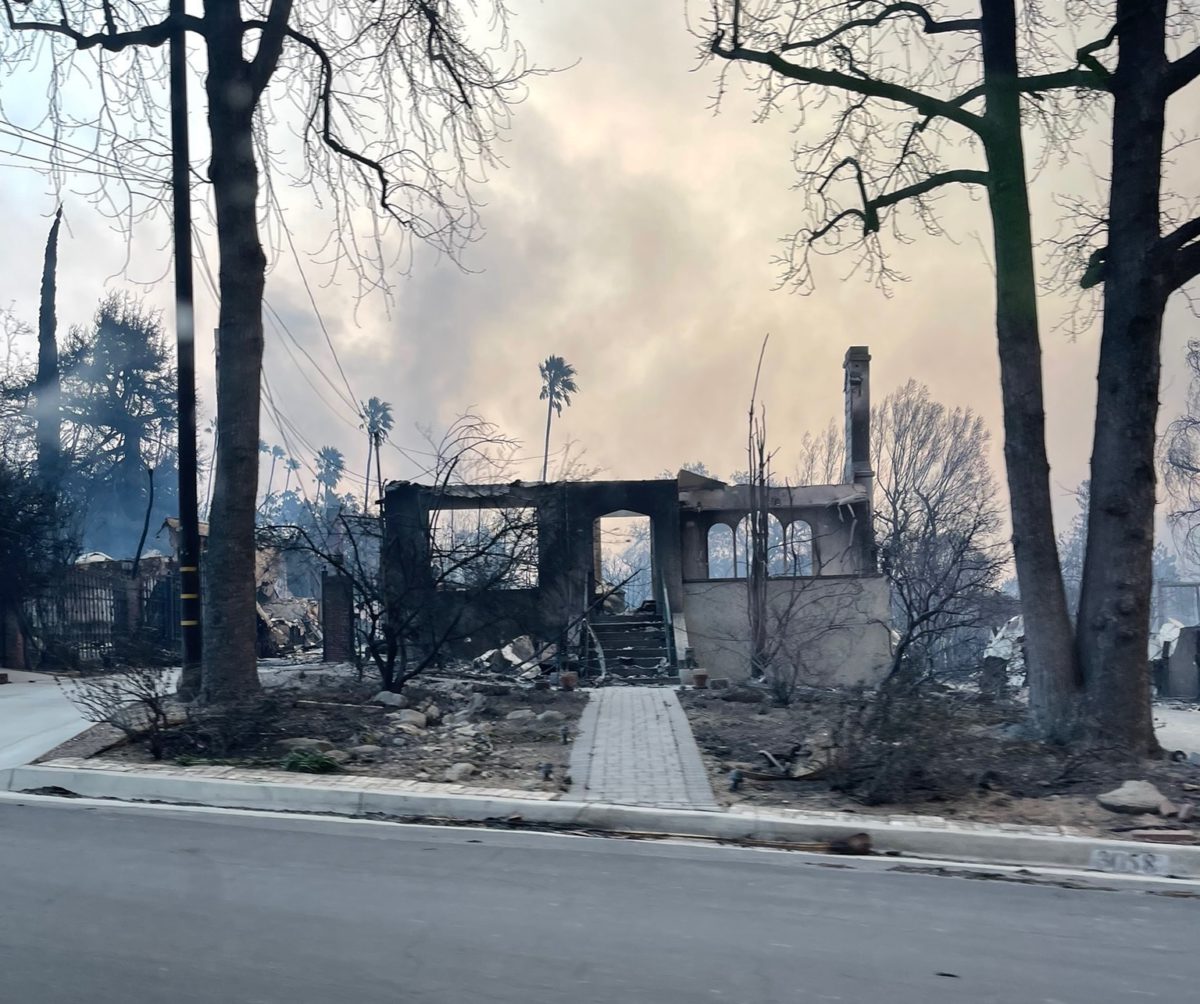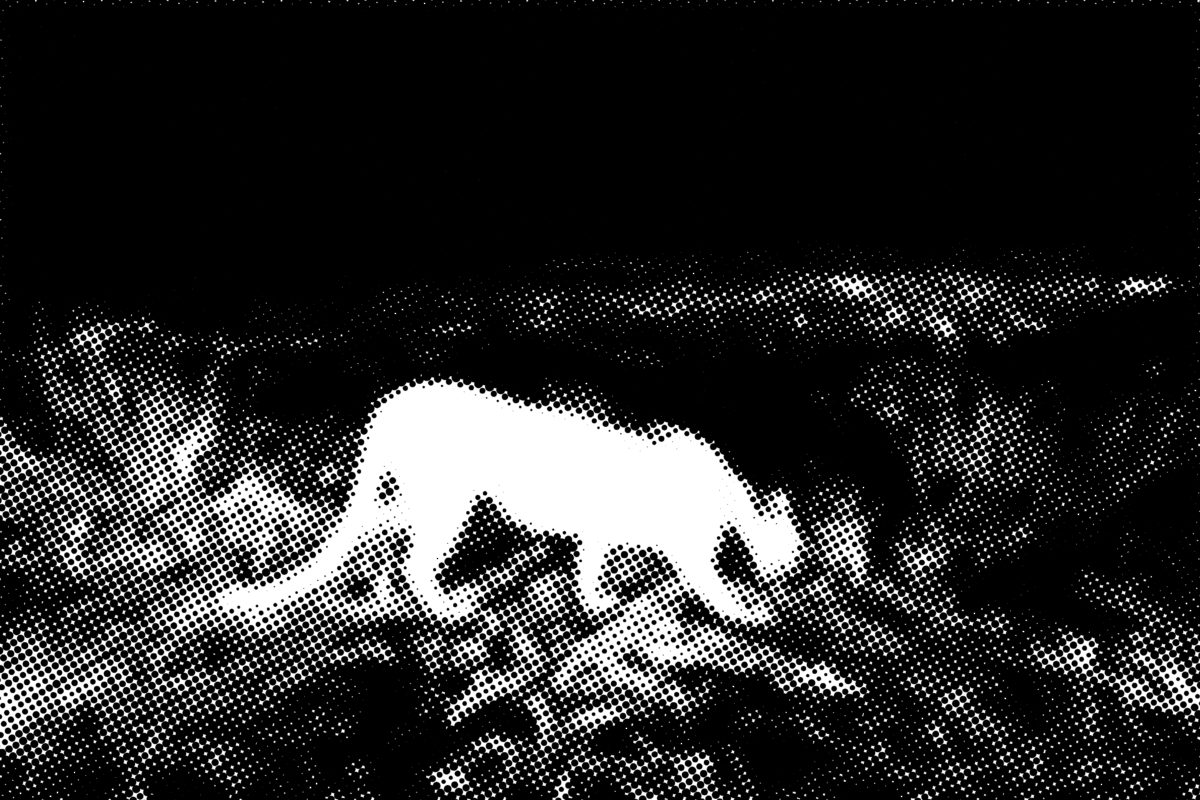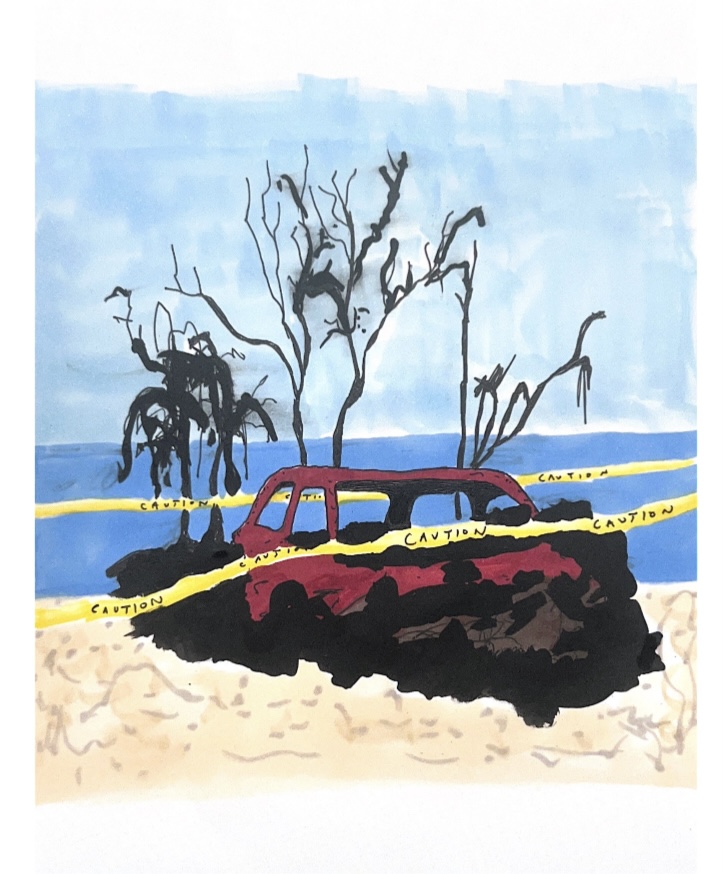
I played some Beach Boys tunes when I read the news that Brian Wilson had died. What I expected to be a mournful but pleasant activity—the postmortem discographic jaunt—ended up being rather morbid. I landed on repeated listens to the 1971 song “Don’t Go Near the Water,” where Wilson seems to disavow a decade of writing near-commercial jingles for the Southern California lifestyle—songs that either simulate or stimulate enjoyment of the region’s proud, public access to coastline. Some of the Beach Boys most famous releases were very literal tributes to sun, sand, and sea (“Cool, Cool Water” or “The Warmth of the Sun”). “Don’t Go Near the Water,” however, tells us to fear what Wilson used to celebrate:
What’s happened to the water
Our water’s going bad
Oceans, rivers, lakes and streams
Have all been touched by man
The poison floating out to sea
Now threatens life on land
Don’t go near the water
Ain’t it sad
What’s happened to the water
It’s going bad
The song gives us a glimpse into Wilson’s schizoaffective mindstate. It’s both haunting and silly, choppy and brilliant. It includes brief bridges that seem to gesture at the camp dystopia, muzak-y sound of Public Service Announcements. These parts are interrupted by the usual upbeat Beach Boys polyphonic bridges accompanied by hoaky lyrics about banding together to “fix the water.” Slowly, this upswing draws back. Then, abruptly, it spirals into a spooky, television horror film keyboard bridge.
“Don’t Go Near the Water” reminds us that psychedelic rock couldn’t have happened without surf pop. Both genres use reverbs, echoes or tremolo guitar picking to simulate metaphysical ecstasy or terror—travelling through space or time thanks to a force beyond one’s control, whether that be wave or chemical. Wilson amassed a toolkit of evocative sonic gimmicks from working in both genres. By the time he wrote “Don’t Go Near the Water,” he was a decade into his career and confident laying the sauce on real thick: the entire song is run through a phase shifter to mimic the wavy, light-refracting effects of water.
The phase shifter is the sonic equivalent of the “ripple effect” in film, where a scene cuts to another as if distorted by subjective memory or the inexplicable entrance of some sort of liquid into the frame. Generally, ripples are used to initiate flashbacks. The effect of Wilson’s cartoonish, sonic gimmicks and dissonant cuts is, indeed, cinematic. “Don’t Go Near the Water” plays like the soundtrack to a flashback sequence of a child blissfully running toward the ocean. Once they reach the water, the child realizes that the water is disgusting and mutated. Then it cuts to another rejoinder about civic duty (Wilson even raps at this point, regrettably). It’s a kitschy, three-part genre pastiche, taking us from romance to horror to educational documentary.
This summer, many Angelenos fear that a Malibu beach day may feel more like a cautionary horror film than a carefree romance montage. Enough debris from the Palisades Fire has sloughed into Malibu beaches for the LA Times to report that, “While visible fire debris still occasionally washes up on shore and should be avoided, public health officials and advocates say, ‘There is little evidence of fire-related toxins high enough to sicken visitors through casual recreational exposure.’” Tests taken in February and March by the Regional Water Quality Control Board found that, even after several significant rainfall events, ocean water near burn zones did not contain high levels of asbestos, dioxins, pesticides or petroleum hydrocarbons. They did, however, find slightly elevated levels of beryllium, copper, chromium, nickel, and lead. Various watchdog non-profit organizations have argued that these tests are not comprehensive enough, failing to look out for other important toxins (the tests looked for traces of 116 pollutants in total). The city has given us “the okay” while others say, “Don’t go near the water.”
Earlier this spring, I polled a sample of Instagram peers to see whether they planned to swim in the ocean water around Malibu in the near future. The results were perfectly split: 50-50. Responses resembled the competing attitudes regarding the relative danger of the Covid-19 pandemic. People either thought that the risks have been overstated—that the water’s actually been fine to swim in since shortly after the fires—or that the risks are being strategically, cynically downplayed—“They’re not telling us how bad it is! They can’t do without the tax income from tourism!” This take seems birthed in the cinematic unconscious, referencing Larry Vaughn (Murray Hamilton), the mayor in Jaws who downplays the dangers of the shark in order to re-open the beaches in time for the arrival of summer vacationers.
For longtime surfers bemoaning summer tourists, the increasing popularity of surfing year after year and the piling up of traffic on the Pacific Coast Highway, this paranoia has been a godsend: This summer is shaping up to be one of the least crowded in recent memory. I did observe, however, on my last surf session at County Line, that there are more surfers in northward surf spots than in previous summers, taking advantage of emptier roads and cleaner waters further up the PCH. As I navigated the line-up of surfers, I still felt that the waters were somehow even clearer this summer. Then I remembered that County Line is famous for its excessively kelp-y water. That day, however, there was almost no kelp.
Plants or animals that live in the sea have suffered this year. But only some from fire-related water quality hazards. Mammals who subsist on smaller fishes that fed on contaminated substances months ago may experience digestive or reproductive difficulties. Widely circulated videos of dead sea lions, whales, and velellas washing up onshore led many to believe that poisonous fire debris was causing a sea creature mass casualty event. Researchers attribute these events to another culprit: algae. A recently ended, unprecedented toxic algae bloom bled massive amounts of a neurotoxin, domoic acid, into the Pacific. Its causes predate the fires. Extending all the way from Mexico to Monterey, the bloom was also simply too large to have anything to do with the fires.
If that doesn’t convince you, I recommend you stick to specific beaches where you’re even safer from debris. More cautious organizations, such as Heal the Bay, suggest you stay away from northern Santa Monica State Beach to Las Flores (this means, roughly, from the Eames House to Duke’s Malibu). Currents in the Santa Monica Bay draw debris southward so it’s wisest to visit beaches anywhere from around Nobu on northward.
This requires a somber drive. Soon after arriving at the Pacific coastline, you find yourself heading up the PCH, driving through the aftermath of the Palisades Fire. The imagery is rather predictable—a luxury graveyard: charred Porsches, Real Estate broker’s smiley “Just Sold!’” signs standing in burned-out lots, hoisted above the rubble like the flag at Iwo Jima. The whole experience is the reverse of that portrayed in “Don’t Go Near the Water”: the journey to the water is haunting, while the water itself is lovely.
Los Angeles is famous for metabolizing catastrophe with alarming speed. It can be a risibly sentimental place. But its long-term citizens know how to use selective amnesia like a surgical scalpel, trained to do so through living in a city that’s always massively fucking up its built environment.
When discussing the fires with fellow Angelenos, I’ve noticed that we mostly talk about how little people are talking about the fires. Yes, the fires were devastating. And monumental. But most of us haven’t seen the devastation up close. It was generally considered inappropriate—non-observance of a respectable grieving period—to tour the fire damage in the weeks and months immediately after the fires. Even so, Los Angeles is famous for metabolizing catastrophe with alarming speed. It can be a risibly sentimental place. But its long-term citizens know how to use selective amnesia like a surgical scalpel, trained to do so through living in a city that’s always massively fucking up its built environment—tearing down the right things, building the wrong things. Rather than mourning what was actually lost, Angelenos seem to be mourning the era before the fires, when we enjoyed a more innocent attitude towards life here. Even if the Santa Ana winds have always produced fires like those this January, there’s a sense that we’ve now moved past the time when we could ignore our land’s vulnerability to climate crises, when fears of it coming to a hillside near you could be postponed.
The fires, however, remain the first thing outsiders mention when they ask how things are going in Los Angeles. Visitors this year seem to arrive with the idea that half of the city was effectively cremated. It seems to almost disappoint them when you disabuse them of this notion. It almost feels like you’re insulting their imagination. Rather, you’re interrupting a common mental reflex: any daydreaming of California must be interrupted by immediate recourse to Schadenfreude. Or, as Don DeLillo famously wrote about watching California wildfires on TV in White Noise: “California deserves whatever it gets. Californians invented the concept of life-style. This alone warrants their doom.”
It’s always seemed unfair, somehow, that so many Angelenos enjoy such porous boundaries between work and leisure. This is not just because of the forms of work common to the culture industry. It is, in part, structural. The co-existence of nature and city provides the feeling that escape—vacation—is ready at hand. This “wildlife urban interface,” otherwise put, is precisely what Mike Davis blames for the rapid proliferation of wildfires in California (most notoriously in the landmark 1995 essay reprinted in Ecology of Fear, “The Case for Letting Malibu Burn”). The wild, coastal and sage chaparral land that California cities exist beside and on top of, Davis warns, is comparatively new geologically speaking, dangerously mutable, and not meant to be developed on as carelessly as it has been. Time has proven Davis correct. After the fires, Cal Fire increased its “fire hazard” zone in Southern California to include 3.5 million additional acres. Compared to, say, the Appalachians, hills in California seem resistant to permanent inhabitation. Hillsides exfoliate, always changing shape, sand-castle-like: they burn, then they’re rained on, then they peel off and slide down.
The Slide Area is the title that Gavin Lambert gave to his novel set in the areas surrounding Malibu, Los Angeles’s “Backyard Big Sur.” “The land is restless here,” Lambert writes, “restless and sliding.” Even if you’re standing still, the land beneath you is always moving. And the more beautiful the topography, the more prone to natural disasters: “The ever-present threat of fire, flood, earthquake, and slide is simply part of the territory—a sublime sense of beauty and catastrophe embedded in the city’s ecology.” Canyons can become matchstrike wind channels. Large hills can become mudslide chutes. Lush foliage kindling for fire. The ocean can become a tsunami. Residents of the slide area, Lambert suggests, abide unique existential tension.
For me, California’s terrain is, more than anything, responsible for Californian’s (famously suspect) psychic calm. The “California chill” is a self-conditioned adaptive strategy for living in a habitat that both entices and repels animal life. It’s a bargain Californians make with a constant sense of the impermanence of their inhabitation of this land and of themselves. It’s similar to a code of silence: why dwell on that great white shark spotting if it’ll ruin your beach day? Or it’s a reaction-formation—converting concern into indifference—that seeks confrontation between its opposing parts. These contradictions express themselves behaviorally: enjoyment of beauty and fear of death co-exist in many of the ways Californians interact with the land. Teenagers always seem to huddle at viewpoints to share a joint or tap a keg beside perilous bluffs. Drivers always seem to joyride on one-lane highways where you’re a delayed reaction away from flying off a cliff. Hikers always seem to ignore extreme temperature warnings. Families gather at some of the nation’s least beginner-friendly beaches, where large waves crash into razor-sharp rock-faces, rip-tides pull in casual swimmers. Cold water. Sharks. Of course, California is not the only catastrophe prone region in the world. But it’s hard to imagine, say, Italians reacting as cavalierly when a volcano explodes in their backyard (I remember watching news footage of a Malibu resident evacuating, fires behind him, skating down Temescal Canyon Road with his grab-and-go belongings. He even smiled for the camera). This could be because California exists on another timeline. Or at least it feels like it does. This place, its lifestyle—even the co-existence of work and play, the tension of pleasure and worry—all seems very untenable. As if we just got here and are still figuring it out. And that we might even be enjoying a finite, rather than endless, summer here. Some, often those with the most money, even lean into this sense of impermanence. They live in hillside, view-centric homes supported by skimpy support beams, down “one-way in, one way out” canyon roads, beside bone-dry brush hillsides, at sea level waterfront homes. Risk is inextricable from California, as a land and as an endeavor.
This place, its lifestyle—even the co-existence of work and play, the tension of pleasure and worry—all seems very untenable. Risk is inextricable from California, as a land and as an endeavor.
The Beach Boys album Surf’s Up begins with “Don’t Go Near the Water” and ends with “Surf’s Up.” After opening the album by badmouthing the ocean water, Wilson takes us full circle—“To be cool with the water/Is the message of this song.” “Surf’s Up” gestures at a new beginning and renewed enjoyment of the ocean. It’s hard to say if it’s genuine or ironic, coming so soon after he’s described the sea as full of “toothpaste and soap,” resembling a “bubble bath.” Similarly, it’s hard to forget the footage we saw of brown ash whisking into white water soon after the fires (many described the resulting brew as “chocolate sludge’ glazing Malibu beaches). Abstaining from the full beach experience this summer, however, means forgoing a post-fire rinse, depriving oneself of a brief—but needed—sense of renewal. As it’s the amniotic ocean, not the land, that gives this state its restorative renown. All the foundational myths about California, after all, seem to cohere around that principle: rebirth. Even Angeleno’s preferred defense mechanism, selective amnesia, can be seen as a precondition for regeneration.
One of Southern California’s keenest observers, David Hockney, decided to return to California from England for this very reason: “I should go for a cure… To California… Treat it like a spa,” he says in the 1973 documentary A Bigger Splash. In California, Hockney painted some of his most memorable works and found his unique, “slide area” tone. His best California paintings take a scene of equanimity and find the latent unease emerging beneath it like a rising hematoma peeks through skin. On my last drive up the PCH, I noticed that Hockney’s old Malibu studio, where he painted many of his most famous works, is still standing, right by Nobu, just past the northernmost reach of the fire. It’s the exact location from which, northward, you’re allegedly safe from finding any debris in the ocean water. Once you pass it, you can start forgetting about all that—the fire devastation, the “poison floating out to sea,” how our “oceans, rivers, lakes, and streams/have all been touched by man.” From there on out, in fact, it may even be considered rude to remind your car-mates of what you all just saw. “Chill out.”

